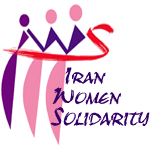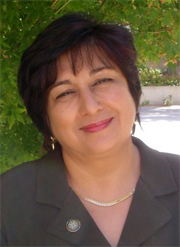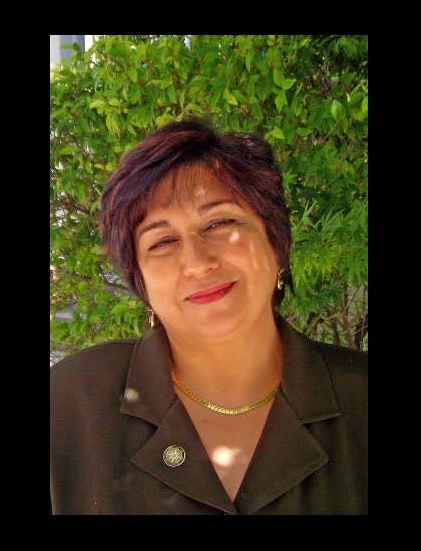While sexual assault and rape [in Iraq war remains largely ignored->http://www.csmonitor.com/2008/1124/p07s01-wome.html] and disregarded, while the incidence of [acid attacks and rape of Afghan Women->http://www.guardian.co.uk/world/2008/nov/22/afghanistan-gender-women-taliban] in recent weeks by Taliban forces remains unresolved, while [women in Iran still enduring violence, arrest, detention->http://www.change4equality.org/english/] and harassment perpetuated by government in physical space and cyberspace and on November 25th, the website of advocates for changing the discriminatory laws against women in Iran was filtered for the 17th time and while the endless atrocities against women in Congo, Sudan and Rwanda, forced prostitution and trafficking , honor killings, and many other forms of violence against women and girls are widespread, the global civil societies, human rights defenders, peace activists, women’s right activist and feminists embarked on the 16 Day of Global Activism Against Gender Violence on November 25th. As in the words of Pat Humphries that more than 30,000 women and more than a thousand man sang in the NGO Forum at the Beijing Conference “Gonna keep on moving forward, Never turning back!”
November 25th, 2008 is the International Day for the Elimination of Violence Against Women, the first day of the [16 Days of Global Activism Against Gender Violence->http://www.cwgl.rutgers.edu/16days/home.html]. The campaign will end on Dec 10th which is the International Human Rights day. It is also know as“ White Ribbon Day” in South Africa, UK and Canada. The White Ribbon is a symbol of hope for a world where women and girls can live with dignity and without fear of violence.
The theme of this year 16 days of Global Activism Against Gender Violence is “Human Rights for Women -Human Rights for All”. [The 60th anniversary of the Universal Declaration of Human Rights->http://www.un.org/events/humanrights/udhr60] ( 1948-2008 ) is a historic time to recognize the collective work of human rights defenders around the world, secure the international conventions and treaties that make up the human rights framework and reclaim the principles of the 1948 declaration which have taken a great setback by the rise of religious extremism, globalization and militarization. Today, feminist, peace activists and human rights defenders around the world calling on governments as well as global civil societies and demanding to put an end to violence against women. The dream of living in a world with peace, security and respect to human rights can no longer be “ deferred”.
History of the International Day for the Elimination of Violence Against Women
The 16 Days of Activism against Gender Violence is an annual international campaign originating from the first Women’s Global Leadership Institute sponsored by the Center for Women’s Global Leadership in 1991. The annual campaign starts from November 25th International Day for the Elimination of Violence against Women, to 10 December, International Human Rights Day — in order to symbolically link violence against women and human rights, and to emphasize that such violence is a violation of human rights. This 16-day period also highlights other significant dates, including December 1st , World AIDS Day, and December 6th , which marks the anniversary of the Montreal Massacre.
The history of November 25th goes back to 25th November 1960, when three sisters Patria, Maria Teresa and Minerva Mirabel, political activists in the Dominican Republic were assassinated in a car accident. They were killed for their involvement in efforts to overthrow the government of Rafael Trujillo. The state violence perpetuated on the Mirabel sisters quickly became symbols of resistance, dignity and inspiration for eliminating violence against women at home and in society. Their lives raised the spirits of all those they encountered and later, after their death, not only those in the Dominican Republic but others around the world.
On July 1981, women from across Latin America came together in Columbia. Appalled by the extent and diversity of violence against women, they agreed to hold an annual day of protest, and they decided to adopt 25th November as the date for this International Day Against Violence Against Women in memory of the Mirabel sisters. In 1991, The first White Ribbon Campaign was launched by a group of men in Canada after the brutal mass shooting of 14 female students at the University of Montreal. In 1996, a year after the 4th UN Women Conference in Beijing, China, the South African National Network on Violence Against Women launched their own White Ribbon Campaign and many South African women’s groups quickly adopted the White Ribbon symbol.
In 1998 the White Ribbon Day was launched in the UK and in December 1999, at the 54 General Assembly session of UN, a resolution adopted and UN officially recognized 25th November as International Day for the Elimination of Violence Against Women.
Violence against women is a global problem that affects women of all ages, ethnicities, races, nationalities and socio-economic backgrounds. Women experience gender-based violence at home, in community and at societal level. Women disproportionately experience domestic violence, sexual assault, sexual harassment, trafficking in person, rape, and even cyber harassment and stalking.
Women experience violence and injustice perpetuated by state and non state actors. The economic, political, social and religious injustice and impunity is a major barrier to women’s human rights and challenge the dignity that women deserve to enjoy. Women also experience violence that may not clearly fall within the framework of the above referenced paradigms but harm women health, safety and security and is a clear violation of women’s ability to enjoy basic human right. These violations are inclusive but not limited of the early childhood marriage for girl child, female genital mutilation, honor killing, dowry-related violence including bride burning, rape as a weapon of war, female infanticide, enforced sterilization, Acid attacks etc. It is also inclusive of harsh measures by government to disproportional restrictions and censorship on women’s presence in cyber world by filtering women blogs and websites as in the case of Iran.
While globally one in every three women experience violence in their life cycle from childhood to the old, in many societies where peace, democracy and human rights are being threaten by the forces of religious extremism/fundamentalism, militarization, aggression and war, women rights and even women’s body are the battle ground of gaining cultural identity or claiming victory by the forces of aggression and occupation.
The global framework for women’s rights have been manifested in the conventions such as [Conventions on Elimination of All Forms of Discrimination Against Women->http://un.org/womenwatch/daw/cedaw] (CEDAW), and in documents from other UN conferences such as the [Vienna Human Rights Declaration and Program of Action->http://www.unhchr.ch/huridocda/huridoca.nsf/(Symbol)/A.CONF.157.23.En] , [the Cairo Program of Action->http://www.iisd.ca/Cairo.html], [the Beijing Platform for Action->http://www.un.org/womenwatch/daw/beijing/platform] and [the Millennium Development Goals->http://www.un.org/millenniumgoals] . Since 1975, the first UN Women Conference in Mexico City, women globally have demanded meaningful change and inserted their desire in the global framework for women’s rights, to live in a world with dignity and respect, peace and prosperity, equality rights and opportunities. However, despite the fact that governments from United State to Congo, from Iran to Afghanistan, South Africa to Guatemala signed these documents ( some bracketed version of the document ) women are not significantly in a better position due to the lack of new and additional resources, the rise of religious extremism, globalization and militarization. These patterns have created an environment of fear and threat for the gains women at global and local level struggled so hard to manifest in these processes.
One of the most comprehensive and inclusive definitions of “[violence against women->http://www.un.org/womenwatch/daw/beijing/platform/violence.htm]” was formulated at the Beijing Women Conference in 1995. In the Platform for Action the term has been defined as “ any act of gender-based violence that results in, or is likely to result in, physical, sexual or psychological harm or suffering to women, including threats of such acts, coercion or arbitrary deprivation of liberty, whether occurring in public or private life.”
The generations that shaped the global women’s movement since 1975, the first UN Women Conference and brought issues such as women’s human rights, violence against women, gender equality, women’s role in peace building and other critical issues from margin to the center of global agenda, are now joining the circles of elders. The new and emerging young women are taking the leadership to further the plight of women for gender equality, peace and development. [The recent global AWID Forum->http://www.awid.org/] on Women’s Rights and Development Cape Town, South Africa, the Gender Equality Coalition efforts to address gender equality at the upcoming [World Social Forum->http://www.forumsocialmundial.org.br/index.php?cd_language=2&id_menu=] in Amazon, Brazil, the strong voice of younger people engaged in US election, the young brave women who are writing the history of women’s movement for equality and dignity in Iran and the Afghan and Palestinian young men and women who never gave up the struggle for living a life in peace, security and respect to human rights are beacons of hopes and sources of inspiration for a world that the dream of human rights, dignity, peace and prosperity can no longer be deferred


